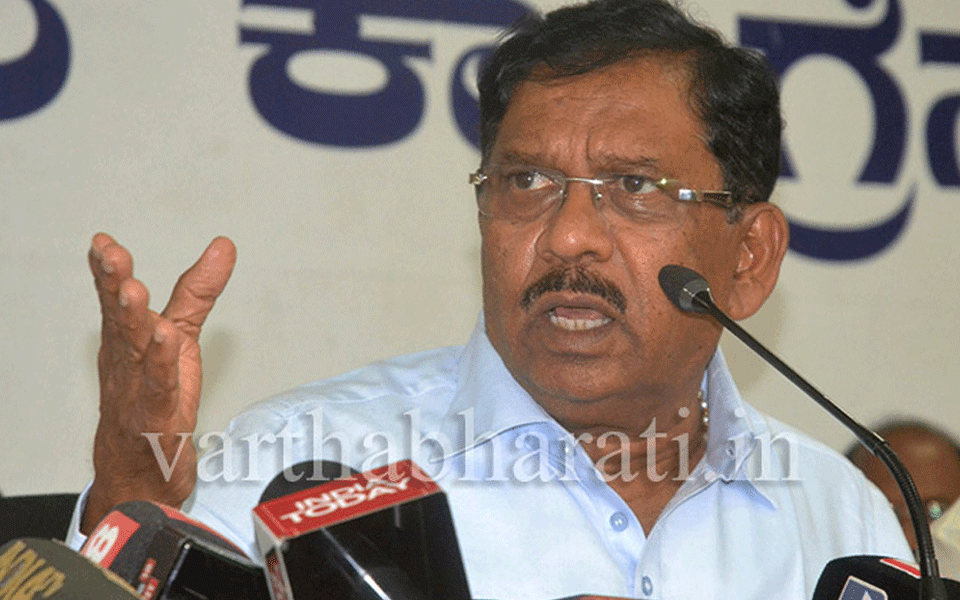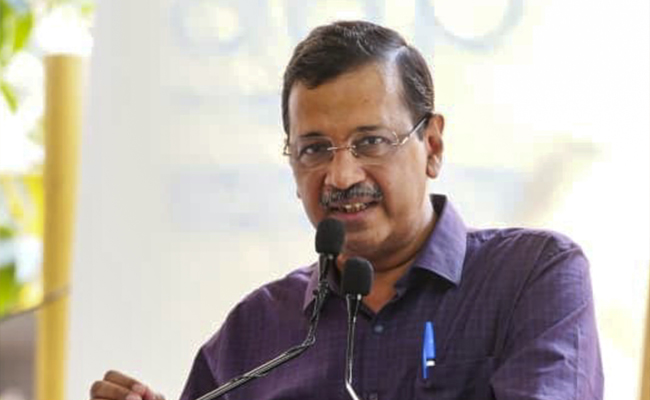Bengaluru, August 24: “Prime Minister Narendra Modi who conducted aerial survey of Kerala’s devastation could have diverted his flight towards Kodagu district. Forget visiting the state. Even he did nothing to console and instill confidence among Kodagu victims”, Deputy Chief Minister Dr G Parameshwar said.
Speaking to reporters here on Friday, the DCM said that Prime Minister Modi had conducted aerial survey in Kerala. But he did not speak a word about the flood and natural disaster in Kodagu and other parts of the state. His step-mother attitude was not good for a federal system, he said.
A report on rain, flood, landslides and losses would be prepared and submitted to the centre shortly and sought financial assistance. The state government was committed to rebuild Kodagu district. Steps would be taken to construct roads, bridges and rehabilitation for the distressed people, he said.
Not misused
Relief materials were not misused. Due to shortage of space in Kodagu, the relief materials were stored in Mysuru and they would be shifted to Kodagu shortly, he said.
All police stations in the state have sufficient arms. In spite of it, the department has considered the CAG report seriously and steps would be taken on priority. He has directed the authorities to submit a report soon and he would personally verify it and solve the problem, he said.
“The Chief Minister would be appealed to issue a circular to avoid felicitation to the CM and the ministers and contribute that amount to the Chief Minister’s Relief Fund”.
-Dr G Parameshwar, DCM
Let the Truth be known. If you read VB and like VB, please be a VB Supporter and Help us deliver the Truth to one and all.
Panaji (PTI): As part of a crackdown against tourist establishments violating laws and safety norms in the aftermath of the Arpora fire tragedy, Goa authorities on Saturday sealed a renowned club at Vagator and revoked the fire department NOC of another club.
Cafe CO2 Goa, located on a cliff overlooking the Arabian Sea at Vagator beach in North Goa, was sealed. The move came two days after Goya Club, also in Vagator, was shut down for alleged violations of rules.
Elsewhere, campaigning for local body polls, AAP leader Arvind Kejriwal said the fire incident at Birch by Romeo Lane nightclub at Arpora, which claimed 25 lives on December 6, happened because the BJP government in the state was corrupt.
An inspection of Cafe CO2 Goa by a state government-appointed team revealed that the establishment, with a seating capacity of 250, did not possess a no-objection certificate (NOC) of the Fire and Emergency Services Department. The club, which sits atop Ozrant Cliff, also did not have structural stability, the team found.
The Fire and Emergency Services on Saturday also revoked the NOC issued to Diaz Pool Club and Bar at Anjuna as the fire extinguishers installed in the establishment were found to be inadequate, said divisional fire officer Shripad Gawas.
A notice was issued to Nitin Wadhwa, the partner of the club, he said in the order.
Campaigning at Chimbel village near Panaji in support of his party's Zilla Panchayat election candidate, Aam Aadmi Party leader Kejriwal said the nightclub fire at Arpora happened because of the "corruption of the Pramod Sawant-led state government."
"Why this fire incident happened? I read in the newspapers that the nightclub had no occupancy certificate, no building licence, no excise licence, no construction licence or trade licence. The entire club was illegal but still it was going on," he said.
"How could it go on? Couldn't Pramod Sawant or anyone else see it? I was told that hafta (bribe) was being paid," the former Delhi chief minister said.
A person can not work without bribing officials in the coastal state, Kejriwal said, alleging that officers, MLAs and even ministers are accepting bribes.





